- Everest Base Camp Trek
- Annapurna Circuit Trek
- Langtang Valley Trek
- Manaslu Circuit Trek
- Upper Mustang Trek
- Ghorepani Poon Hill Trek
- Gokyo Lakes Trek
- Kanchenjunga Base Camp Trek
- Annapurna Base Camp Trek
- Three Passes Trek
- Best Time to Visit the Top 10 Trekking Destinations in Nepal
- Essential Tips for the Top 10 Trekking Destinations in Nepal
- FAQs of the Top 10 Trekking Destinations in Nepal
Nepal is a haven for trekkers, offering some of the world's most stunning and diverse landscapes20. From the iconic Everest Base Camp trek to the scenic Annapurna Circuit highlights, the country presents a variety of trekking routes in Nepal suitable for all levels of experience. Whether looking for short treks in Nepal or comprehensive expeditions like the Three Passes Trek experience, each journey promises unique adventures and breathtaking vistas. Top 10 Trekking Destinations in Nepal encompasses everything from the culturally rich Upper Mustang trek to the serene and less-traveled Gokyo Lakes best season trek. For those new to the trails, the Ghorepani Poon Hill sunrise trek offers an accessible and immensely rewarding experience. Ensuring safety with proper Trekking Nepal safety tips, especially during Nepal monsoon trekking, is crucial for an enjoyable and safe adventure. Whether you’re exploring remote treks in Nepal or indulging in the vibrant cultural treks in Nepal, each path offers a profound connection to the natural and cultural heritage of this incredible country.
At Druk Holidays, we pride ourselves on being the best company for exploring the Top 10 Trekking Destinations in Nepal. Our expertly curated Nepal trekking packages are designed to cater to every adventurer's needs, from the breathtaking Everest Base Camp trek to the culturally immersive Upper Mustang trek. With Druk Holidays, you embark on a journey that promises both travel and transformation. Our dedicated guides ensure that each trekker receives personalized attention, and optimal safety with up-to-date Trekking Nepal safety tips, and rich insights into the local culture and history. Whether you’re a seasoned trekker aiming for the challenging Three Passes Trek experience or a beginner enthusiastic about the Ghorepani Poon Hill sunrise trek, our commitment to excellence and deep local knowledge make Druk Holidays your ideal partner for discovering the majestic landscapes and diverse cultures of Nepal.
Everest Base Camp Trek
Embark on the iconic Everest Base Camp Trek, a journey that not only challenges the body but also enriches the spirit with its stunning landscapes and vibrant Sherpa culture. This trek takes you through the heart of the Nepalese Himalayas, offering unforgettable experiences and breathtaking views of the world’s highest peaks.
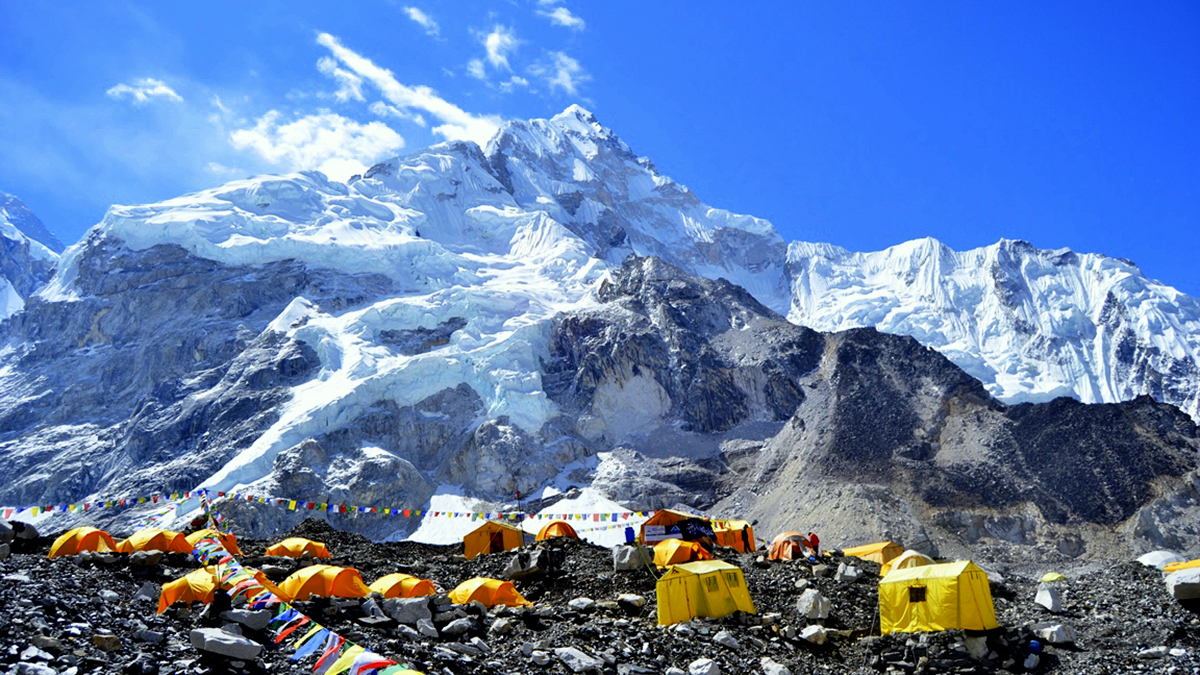
- Namche Bazaar: Often referred to as the gateway to Everest, this bustling town offers trekkers a mix of modern amenities and traditional Sherpa culture.
- Tengboche Monastery: Visit the largest monastery in the Khumbu region, renowned for its panoramic views of Everest, Ama Dablam, and other peaks.
- Kala Patthar: Climb to the summit of Kala Patthar for the best view of Mount Everest’s summit, providing a dramatic and awe-inspiring photo opportunity.
- Sherpa Villages: Experience the warm hospitality and rich culture of the Sherpa communities by visiting villages like Phortse, Khumjung, and Pangboche.
- Sagarmatha National Park: Trek through this UNESCO World Heritage site, home to rare species like the snow leopard and the Himalayan tahr.
- Everest Base Camp: Stand at the base of the world’s tallest mountain, a dream for many trekkers, offering a sense of accomplishment and awe.
- Khumbu Icefall: Witness the majestic and treacherous Khumbu Icefall, one of the most dangerous stages of the South Col route to Everest’s summit.
- Imja Tse (Island Peak): For those looking for an additional challenge, the opportunity to climb Island Peak offers an exhilarating mountaineering experience beyond the traditional trek.
The Everest Base Camp Trek is not just a physical journey but a voyage into the heart of the Himalayas. It offers a unique blend of natural beauty, challenging terrain, and cultural richness, making it one of the most unforgettable adventures in the world. Whether you’re a seasoned trekker or a passionate novice, this trek promises to be a transformative experience, filled with moments of awe and a deep appreciation for the majesty of the mountains.
Annapurna Circuit Trek
The Annapurna Circuit Trek is one of the most varied and stunning treks in the world, winding through lush subtropical forests, arid high mountain landscapes, and along the deep gorges of the Marsyangdi and Kali Gandaki rivers. Renowned for its rich cultural diversity and stunning alpine scenery, this trek offers a deeply immersive experience that attracts adventurers from all over the globe.
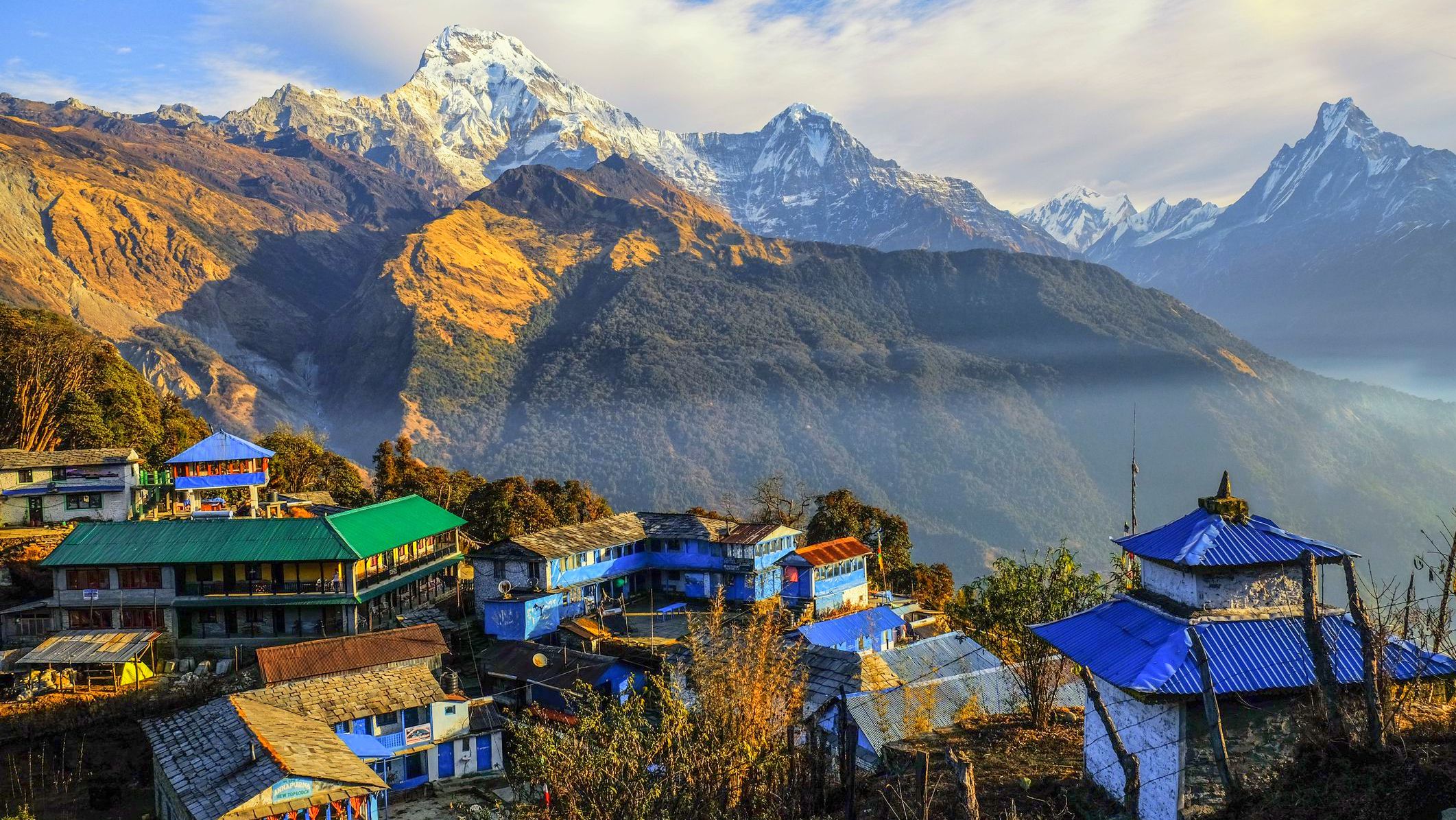
- Thorong La Pass: At 5,416 meters, crossing Thorong La is the highest and most challenging point of the trek, offering breathtaking views of the Annapurna range and the arid Tibetan Plateau to the north.
- Manang Village: A rest day in Manang helps trekkers acclimatize and explore the unique culture of the region, including ancient monasteries and traditional lifestyles.
- Muktinath Temple: An important pilgrimage site for both Hindus and Buddhists, Muktinath is a spiritual highlight, with its eternal flame fed by natural gas seepages and 108 water spouts.
- Marpha Village: Famous for its apple orchards and the local apple brandy, Marpha is a charming stone-lined village that provides a warm welcome after the arduous descent from Thorong La.
- Poon Hill: Though slightly off the main circuit, many trekkers opt to detour to Poon Hill to witness one of the most famous sunrises in Nepal, with panoramic views of the entire Annapurna range.
- Rupse Chhahara (Waterfall): Witness the stunning Rupse Chhahara, a beautiful and towering waterfall, providing a picturesque spot to rest and enjoy the natural beauty.
- Tatopani: Famous for its hot springs, Tatopani is a popular stop to relax sore muscles in natural hot pools amidst the backdrop of the Himalayas.
- Kali Gandaki Gorge: Trek through the world’s deepest gorge, a spectacular and dramatic part of the trail that follows the Kali Gandaki river between the towering peaks of Annapurna and Dhaulagiri.
The Annapurna Circuit Trek is an extraordinary adventure that offers an unparalleled variety of scenery and cultural experiences. It’s a journey that challenges the body, stimulates the mind, and enriches the soul, making it a must-do for anyone passionate about trekking. This trek not only showcases the beauty of the Annapurna region but also provides a deep connection to the natural and cultural landscapes of Nepal, ensuring memories that last a lifetime.
Langtang Valley Trek
The Langtang Valley Trek is a captivating journey that takes you through the heart of the Langtang region, one of the closest trekking destinations from Kathmandu. Known for its scenic vistas, remote atmosphere, and the distinctive culture of its Tibetan-influenced inhabitants, this trek offers a tranquil yet dramatic introduction to the Himalayas.
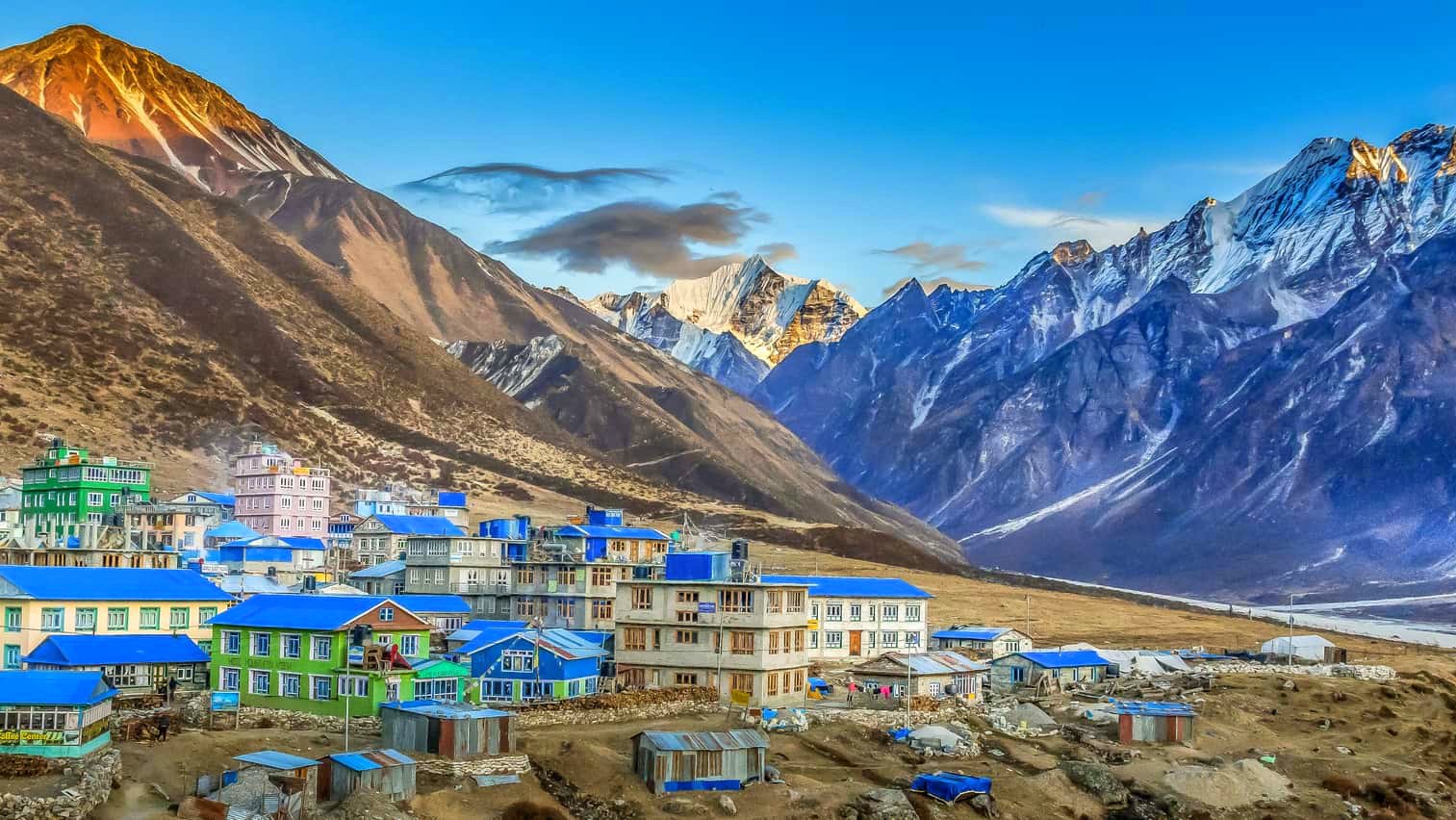
- Langtang Village: The trek leads to Langtang Village, which was tragically affected by the 2015 earthquake but has since been rebuilt. The village offers insights into the resilient nature of the local Tamang people and their culture.
- Kyanjin Gompa: Trekking further into the valley brings you to Kyanjin Gompa, a significant Buddhist monastery located amidst the stunning backdrops of the Langtang mountains. This is often the highest point of the trek for many adventurers.
- Tserko Ri: For those willing to extend their trek slightly, a climb to Tserko Ri presents breathtaking panoramic views of the Langtang range, making it a highly rewarding detour.
- Langtang National Park: As you trek, you’ll wander through Langtang National Park, which is home to diverse wildlife including red pandas, Himalayan black bears, and various bird species.
- Cheese Factory: At Kyanjin Gompa, visit the local cheese factory where delicious yak cheese is produced. It’s a unique aspect of this trek, blending local culinary practices with traditional lifestyles.
- Tamang Heritage Trail: This part of the trek introduces you to the rich cultural heritage of the Tamang people, showcasing their customs, traditional architecture, and crafts.
- Glacial Moraines: Venture through areas marked by past glacial activities, adding a rugged, raw beauty to the landscape that is both stark and mesmerizing.
- Lush Rhododendron Forests: During spring, the trail is lined with beautiful rhododendron forests in full bloom, offering a spectacular display of color.
The Langtang Valley Trek is ideal for trekkers who wish to experience the beauty and cultural richness of the Himalayas without venturing too far from Kathmandu. It’s a journey that offers a profound blend of natural beauty, wildlife exploration, and cultural immersion, providing an enriching and memorable trekking experience in one of Nepal’s most captivating regions. Whether you’re a seasoned trekker or relatively new to hiking in the Himalayas, Langtang Valley offers a compelling adventure that is both accessible and deeply rewarding.
Manaslu Circuit Trek
The Manaslu Circuit Trek is renowned for its remote and majestic beauty, offering an authentic adventure around the world's eighth highest peak, Mount Manaslu. This trek is less trafficked than its more famous counterparts like the Annapurna Circuit or Everest Base Camp, providing a peaceful journey through some of the most pristine landscapes in Nepal.
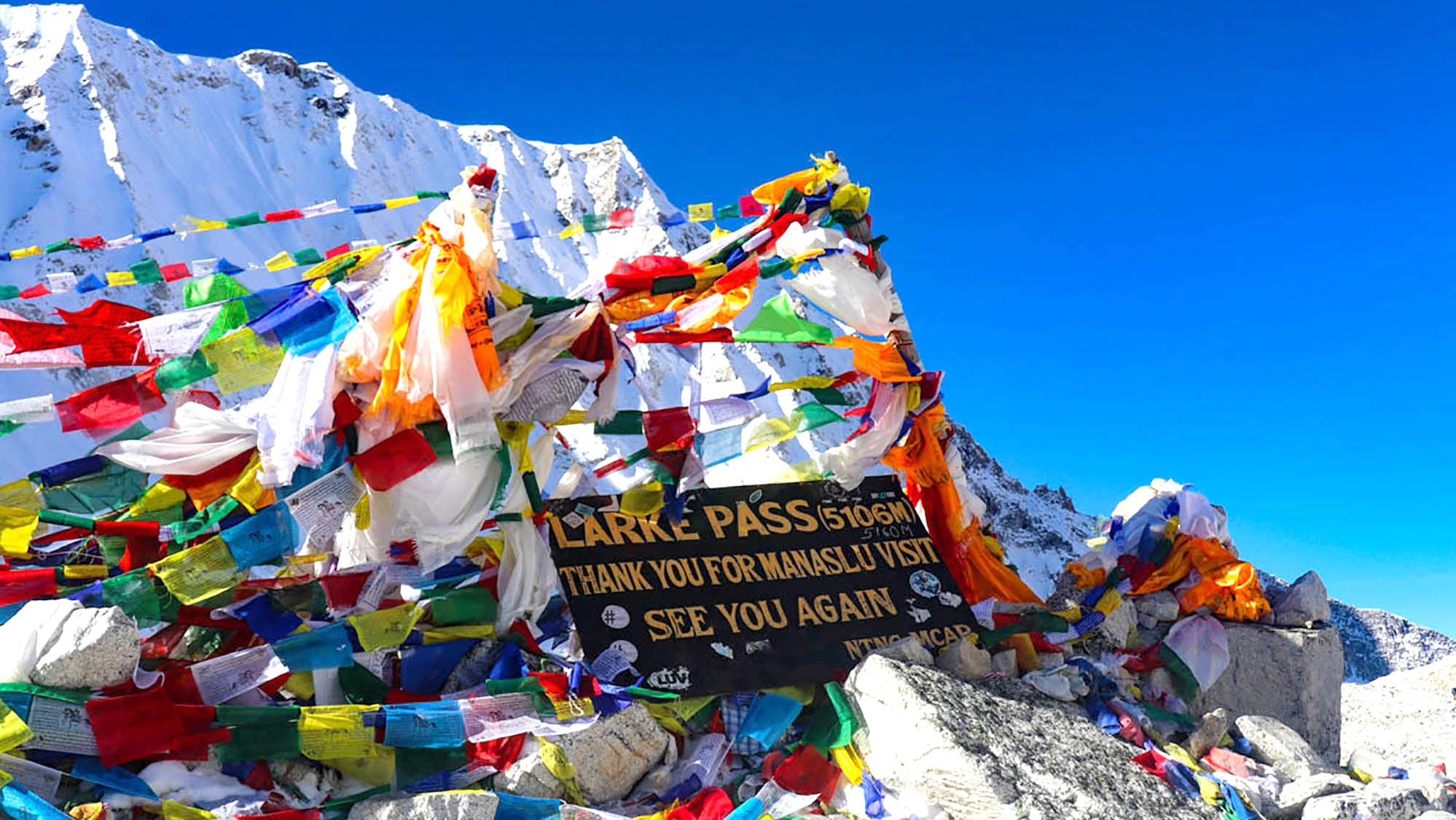
- Larkya La Pass: At an elevation of 5,106 meters, crossing the Larkya La Pass is the most challenging and exhilarating part of the trek, offering spectacular views of the Manaslu range.
- Manaslu Base Camp: For those looking to add a challenging day hike, a visit to Manaslu Base Camp provides up-close views of Manaslu’s towering glacier and the surrounding peaks.
- Birendra Lake: This stunning glacial lake near Samagaon is an ideal spot for a rest day, with crystal clear waters reflecting the snowy peaks above.
- Tsum Valley: Often combined with the Manaslu trek, the sacred Tsum Valley is a hidden gem with ancient monasteries and traditional villages that have remained largely untouched by modernization.
- Samdo Village: Located close to the Tibetan border, Samdo is a bustling little village with a unique culture. Trekkers can observe the daily lives of the local Tibetan communities.
- Nupri Region: The trek passes through the Nupri region, where the culture and architecture are predominantly Tibetan, offering insights into their rich heritage and Buddhist traditions.
- Soti Khola: Beginning the trek in Soti Khola introduces trekkers to lush subtropical forests and the roaring Budhi Gandaki River, setting the stage for the diverse ecological zones ahead.
- Ethnic Diversity: Throughout the journey, trekkers encounter various ethnic groups including Gurung, Magar, and Sherpa communities, each offering a unique cultural experience.
The Manaslu Circuit Trek is a truly captivating journey for those seeking solitude and the raw beauty of the Himalayas. It challenges trekkers physically and mentally but rewards them with some of the most stunning landscapes and cultural richness Nepal has to offer. Ideal for those looking to venture off the beaten path, the Manaslu Circuit provides a quieter, yet no less spectacular, alternative to the more crowded treks in Nepal.
Upper Mustang Trek
The Upper Mustang Trek unveils the hidden world of the ancient Kingdom of Mustang, also known as Lo. This remote region of Nepal, once an independent kingdom until the 18th century, retains a rugged and mystical charm, with a landscape and culture that are more akin to Tibet than Nepal. Its relative isolation from the rest of the world preserves a largely undisturbed Tibetan culture and stark, beautiful desert landscapes.
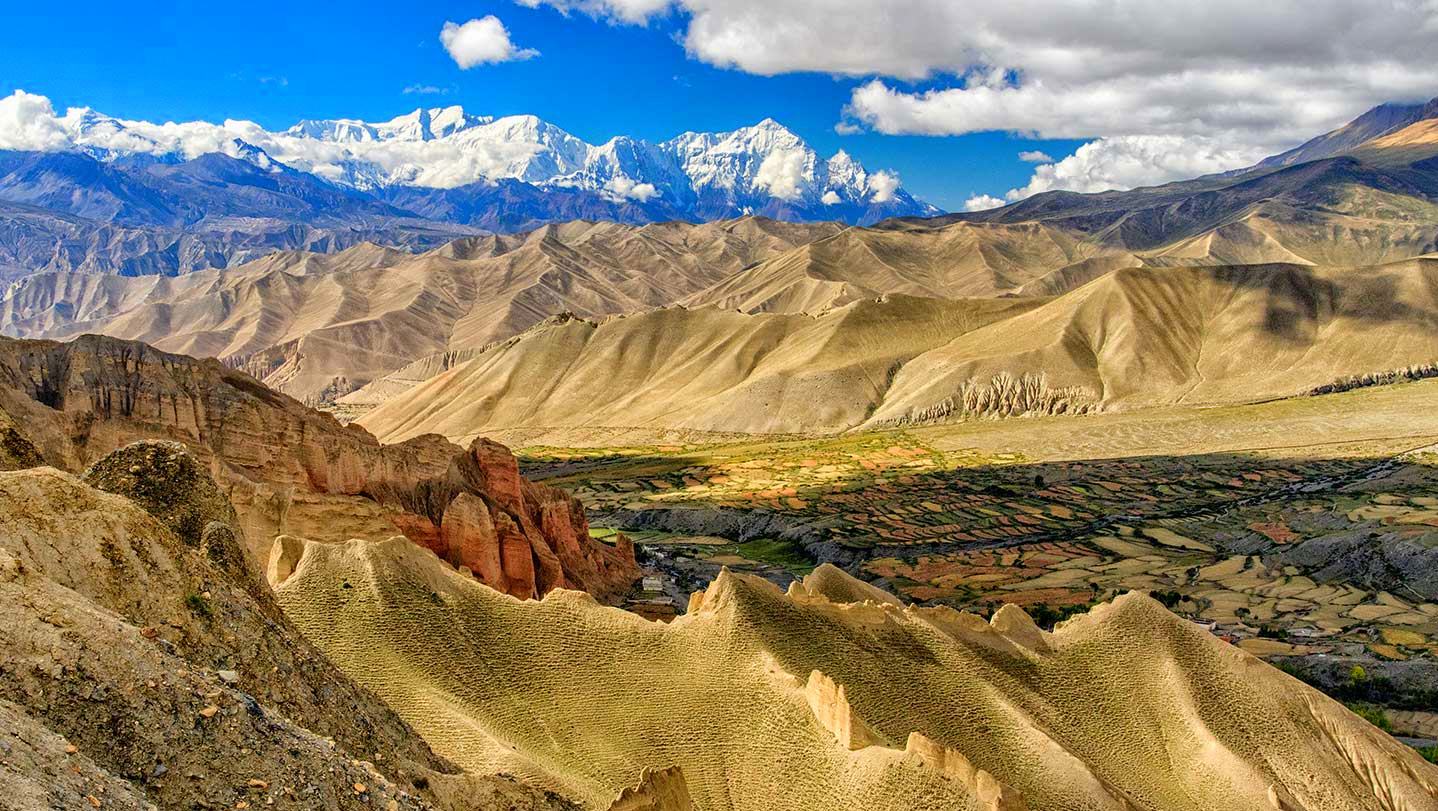
- Chhoser Cave: Explore the ancient cave system near Lo Manthang, where you can find old Tibetan Buddhist murals and a glimpse into the region’s history as a safe haven.
- Tiji Festival: If you time your visit right, experiencing the Tiji Festival in Lo Manthang is a cultural spectacle, featuring traditional Tibetan dances, colorful costumes, and rituals that are said to dispel demons.
- Kagbeni Village: Often the entry point to Upper Mustang, Kagbeni is a quaint medieval village with narrow alleyways and a picturesque monastery, providing a stark contrast to the lush landscapes of lower regions.
- Coronation Temple: Visit the temple where the kings of Mustang were once crowned, a significant site that encapsulates the historical and spiritual essence of the region.
- Mustang Caves: Hundreds of man-made caves are dug into the cliff sides of Mustang, some high above the valley floor, offering an archaeological mystery and incredible views for those who venture there.
- Desert Landscapes: The arid, moon-like landscape of Upper Mustang, with its deep ravines and rock formations, offers a striking backdrop that contrasts dramatically with the green terrains found in other parts of Nepal.
- Sky Caves of Mustang: These mysterious man-made caves, some of which are several stories high and thousands of years old, present a fascinating exploration opportunity for adventurous trekkers.
The Upper Mustang Trek is perfect for those looking to experience a different side of the Himalayas. It is not just a trek but a journey back in time, offering a rare glimpse into the life and culture of a region that has remained isolated from the world for centuries. With its stark landscapes, ancient traditions, and archaeological wonders, Upper Mustang continues to be one of the most captivating trekking destinations in Nepal.
Ghorepani Poon Hill Trek
The Ghorepani Poon Hill Trek is one of the most popular and accessible treks in the Annapurna region of Nepal, ideal for those who wish to enjoy the beauty of the Nepalese Himalayas without committing to a long and arduous journey. This trek combines beautiful mountain scenery with cultural experiences in the Gurung villages along the route.
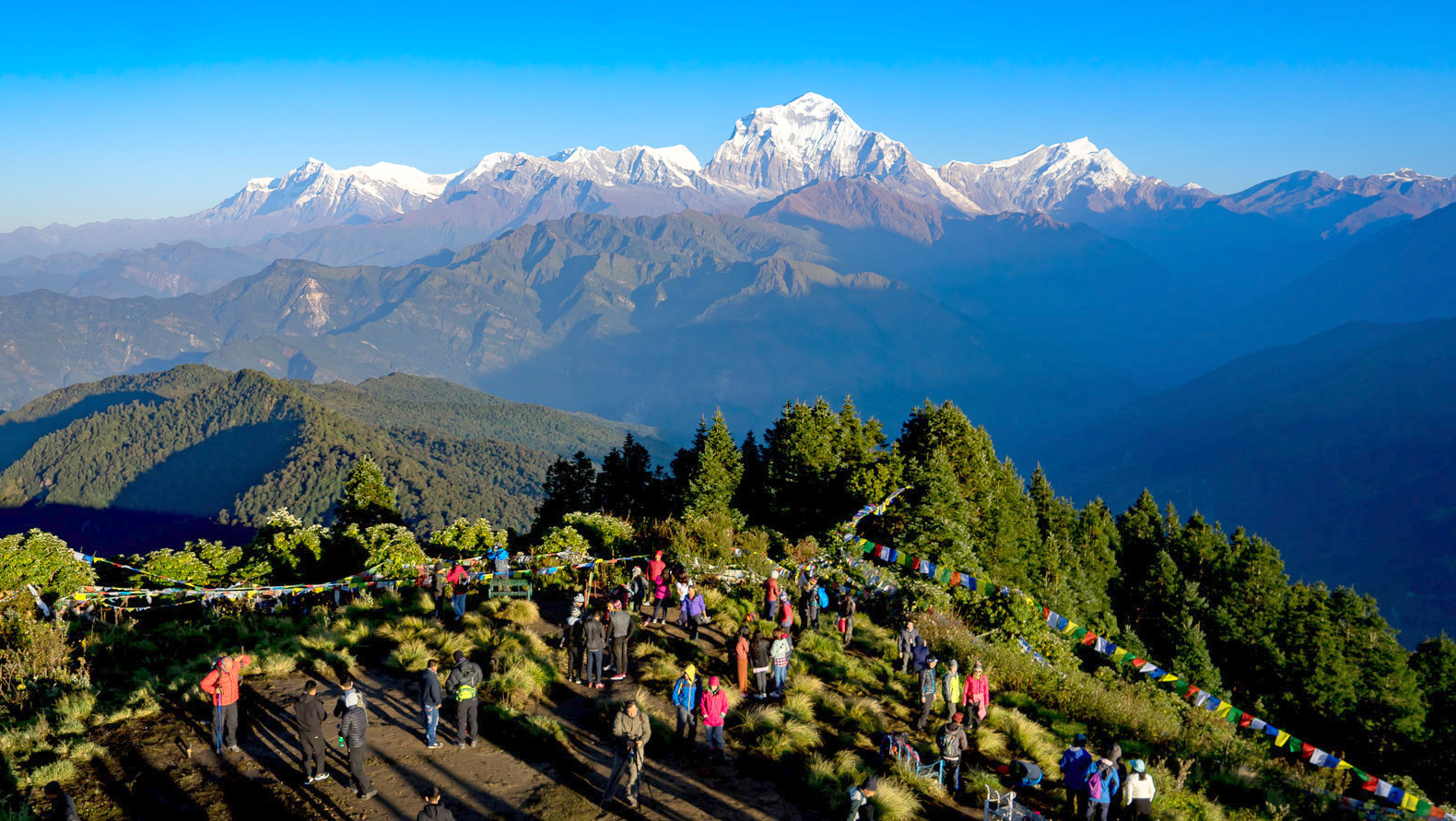
- Poon Hill Sunrise: The highlight of this trek is the early morning hike to Poon Hill to witness a breathtaking sunrise over the Himalayas, with panoramic views of mountains like Dhaulagiri, Annapurna South, Machhapuchhre, and many others.
- Ghorepani Village: Nestled at an altitude of 2,850 meters, Ghorepani is a charming village predominantly inhabited by the Gurung and Magar communities, offering warm hospitality and a glimpse into the rural lifestyle of the central Nepalese hills.
- Rhododendron Forests: The trek passes through thick forests of rhododendron, Nepal’s national flower, which are spectacularly vibrant when in full bloom during the spring months.
- Ghandruk Village: On the descent, trekkers often pass through Ghandruk, a beautiful village known for its traditional stone houses and being a well-preserved example of Gurung culture.
- Ethnic Culture and Traditions: The trek provides an excellent insight into the life in the mountain villages of Nepal, including their traditional dances, music, and customs.
- Tadapani Village: Another scenic village along the route, Tadapani offers splendid views of the surrounding mountains and is a peaceful place to rest and enjoy the natural surroundings.
- Ban Thanti: Trekking through this area involves walking alongside streams and through dense woods, providing a serene and contemplative experience of nature’s tranquility.
- Ulleri Village: Known for its steep stone staircases, Ulleri provides a rigorous yet rewarding climb, interspersed with tea houses that offer respite and panoramic views.
The Ghorepani Poon Hill Trek is perfectly suited for those looking for a short yet rewarding trekking experience. It is particularly appealing to novice trekkers and those limited by time, as it provides a compact slice of the trekking adventures Nepal is famous for, including magnificent views, cultural insights, and natural beauty. This trek is an excellent introduction to Himalayan trekking, combining physical challenge with cultural enrichment and spectacular natural beauty.
Gokyo Lakes Trek
The Gokyo Lakes Trek is a magnificent alternative to the classic Everest Base Camp trek, offering trekkers a less crowded path with equally stunning views of the Everest region. This trek is celebrated for its serene and expansive views of turquoise lakes, glacier landscapes, and panoramic mountain vistas from Gokyo Ri.
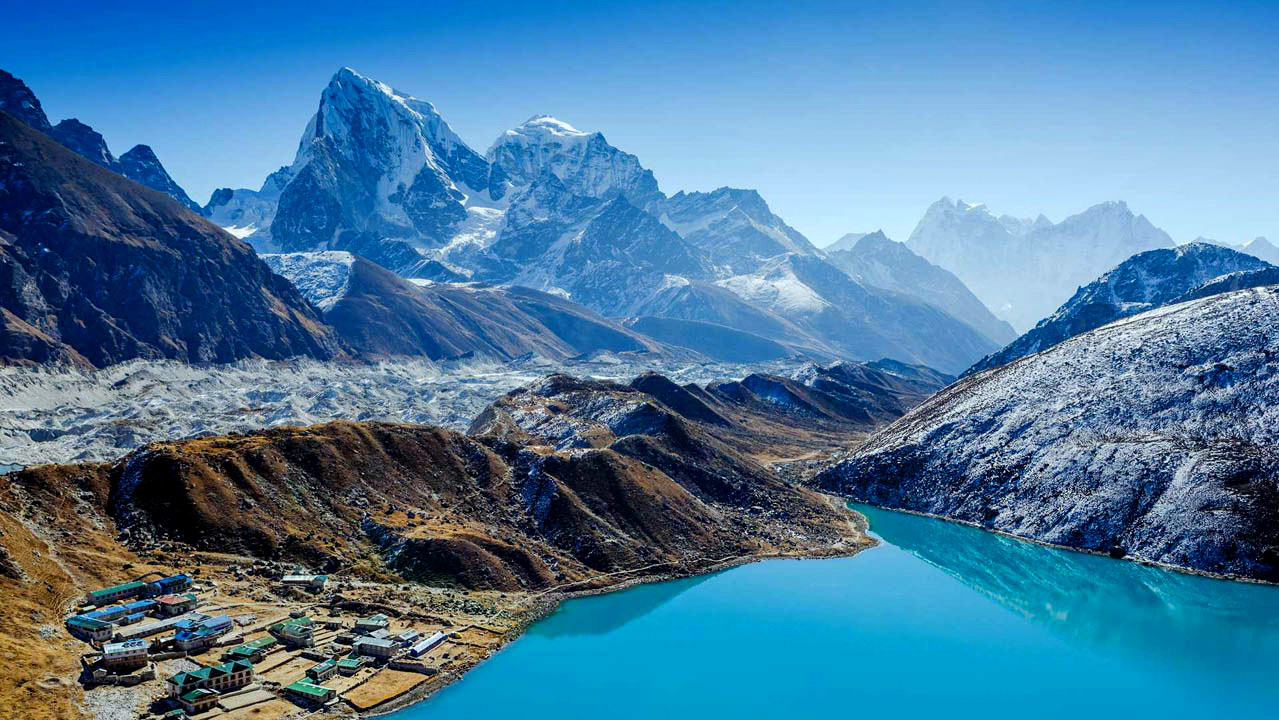
- Gokyo Lakes: The trek features a series of six spectacular turquoise lakes, each nestled further into the Gokyo Valley. The largest, Gokyo Cho, is directly beside the village of Gokyo and offers mesmerizing views.
- Gokyo Ri: Climbing Gokyo Ri (5,357m) is a highlight of the trek, providing one of the best panoramic views in the Everest region, including Everest, Lhotse, Makalu, and Cho Oyu.
- Ngozumpa Glacier: The trek offers an up-close view of the Ngozumpa Glacier, the longest glacier in the Himalayas, presenting a striking aspect of the region's rugged natural beauty.
- Gokyo Village: Located at the edge of the third lake, Gokyo Village is a serene and welcoming stop on the trek, offering lodges with exceptional views of the lakes and peaks.
- Renjo La Pass: For those extending their trek, crossing the Renjo La Pass offers stunning views and a more challenging hiking experience, connecting the Gokyo region with the Thame Valley.
- Sagarmatha National Park: The trek traverses through this UNESCO World Heritage site, which is home to significant flora and fauna, including the elusive snow leopard and the Himalayan tahr.
- Fourth and Fifth Lakes: A hike to the fourth and fifth lakes offers solitude and spectacular scenery, with the fifth lake providing a particularly remarkable viewpoint towards Everest and Cho Oyu.
- Sherpa Culture: Experience the warm hospitality and rich culture of the Sherpa people, learning about their traditions and way of life in the high Himalayas.
The Gokyo Lakes Trek is a fantastic choice for those who wish to explore the beauty of the Everest region in a more secluded and serene setting. This trek not only showcases some of the most breathtaking glacial lakes and mountain panoramas but also offers a deeper connection with the environment and culture of the Himalayas. Whether you are a seasoned trekker or a passionate nature lover, the Gokyo Lakes Trek promises an unforgettable adventure in one of the most spectacular settings on earth.
Kanchenjunga Base Camp Trek
The Kanchenjunga Base Camp Trek is an exceptional journey to the eastern part of Nepal, offering a path less traveled to the base camps of the world’s third-highest mountain, Mount Kanchenjunga. This trek is renowned for its remoteness and pristine natural beauty, providing a challenging yet rewarding experience for serious trekkers who seek solitude and spectacular landscapes.
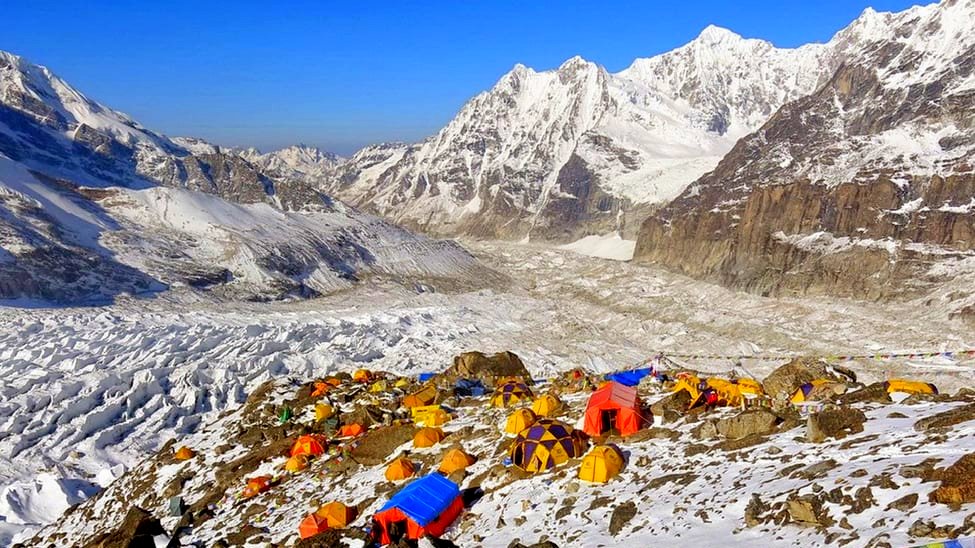
- Kanchenjunga Base Camps: The trek leads to both the North and South Base Camps of Kanchenjunga, offering trekkers stunning close-up views of the massive mountain and its surrounding peaks.
- Pang Pema (North Base Camp): Reaching Pang Pema allows trekkers to witness the dramatic north face of Kanchenjunga, providing one of the trek's most breathtaking vistas.
- Oktang (South Base Camp): From here, trekkers can view the south face of Kanchenjunga along with a panorama of surrounding mountains, including Jannu, also known as Kumbhakarna.
- High Mountain Passes: The route involves crossing several high mountain passes, including Sinion La, Mirgin La, and Lapsang La, each offering unique and stunning views of the Himalayas.
- Remote Wilderness: Trek through some of the most untouched and pristine areas in Nepal, with a diverse range of flora and fauna, including the chance to spot rare wildlife like the snow leopard and red panda.
- Traditional Villages: The trek passes through various Rai and Limbu villages, offering insights into the lives and cultures of local ethnic groups in this less-visited region.
- Lhonak Village: This tiny settlement near Pang Pema serves as a crucial resting point and offers a stark yet beautiful view of the surrounding glaciers and peaks.
- Serene Landscapes: Trek through beautiful forests, serene river valleys, and rugged high-altitude landscapes, experiencing some of the most outstanding natural beauty Nepal has to offer.
The Kanchenjunga Base Camp Trek is perfect for adventurers who thrive in isolated environments and have a passion for exploring some of the less commercialized regions of the Himalayas. This trek not only challenges the physical and mental stamina of its travelers but also rewards them with some of the most stunning and untouched landscapes in the world. It’s a profound journey that offers a unique blend of adventure, solitude, and breathtaking beauty, making it a must-do for serious trekkers around the globe.
Annapurna Base Camp Trek
The Annapurna Base Camp Trek is one of the most popular treks in Nepal, offering a remarkable journey to the heart of the Annapurna range. Known for its stunning natural beauty and cultural richness, this trek provides a perfect blend of natural grandeur and local hospitality, making it a favorite among both novice and experienced trekkers.
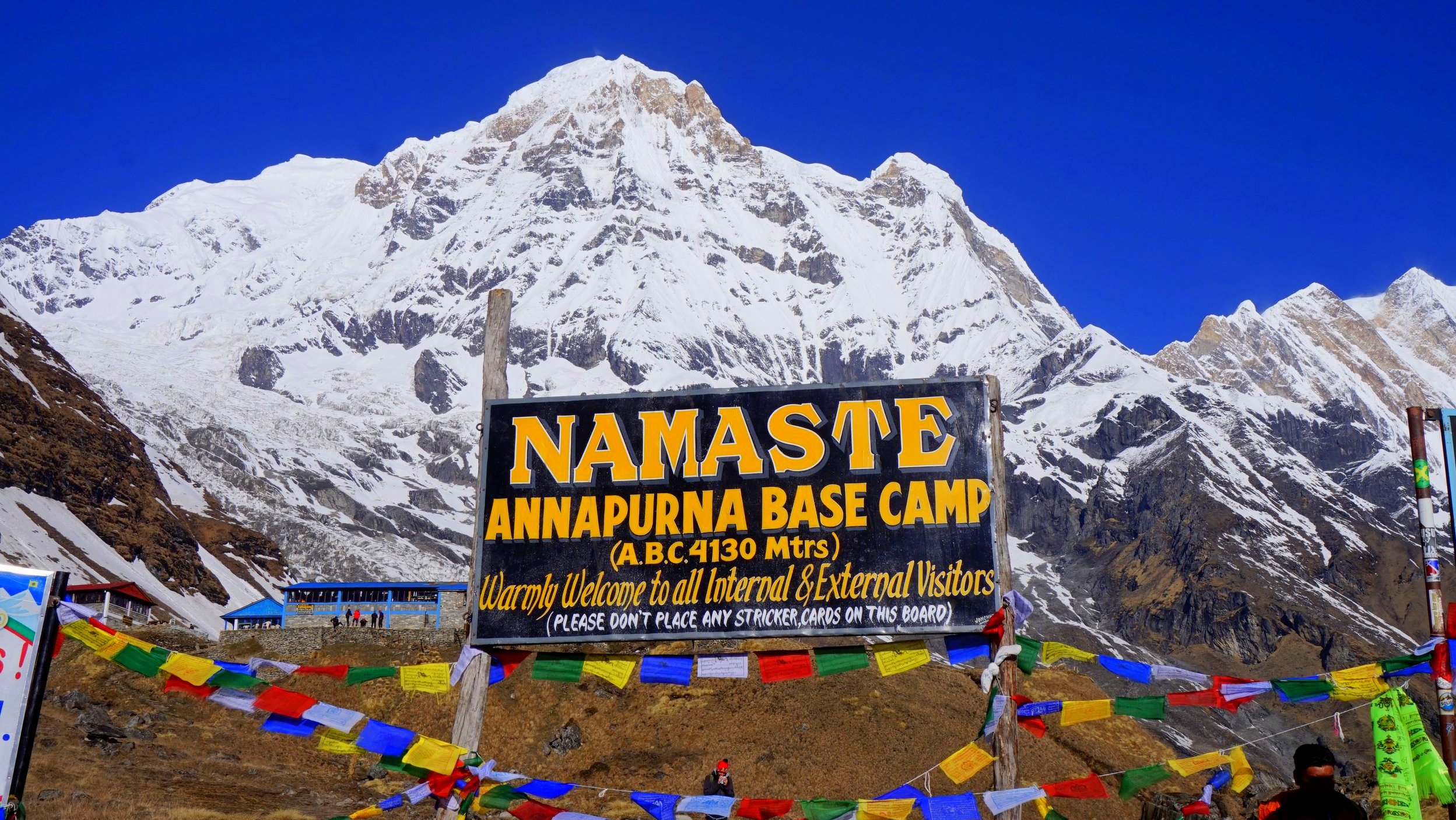
- Annapurna Base Camp (ABC): Reaching the Base Camp at 4,130 meters is the ultimate goal, where trekkers are surrounded by a 360-degree panorama of massive Himalayan peaks, including Annapurna I, Annapurna South, Machhapuchhre, and Hiunchuli.
- Machhapuchhre Base Camp (MBC): On the way to ABC, trekkers pass through MBC, which offers stunning up-close views of the sacred and unclimbed Machhapuchhre (Fishtail) Mountain.
- Poon Hill: Although not on the direct route to ABC, many trekkers choose to include Poon Hill in their itinerary for its famous sunrise views over the Annapurna and Dhaulagiri ranges.
- Jhinu Danda Hot Springs: After several days of trekking, many trekkers appreciate the chance to relax in the natural hot springs located near Jhinu Danda, providing a soothing experience amidst the mountains.
- Gurung Villages: The trek passes through several beautiful Gurung villages like Ghandruk and Chhomrong, where trekkers can experience the warm hospitality of the Gurung people and learn about their rich culture and traditions.
- Diverse Flora and Fauna: The trail winds through rhododendron forests, bamboo groves, and alpine meadows, offering opportunities to observe a wide variety of birds and occasionally, wildlife like monkeys and langurs.
- Suspension Bridges: Crossing several picturesque suspension bridges over mountain rivers adds an element of adventure and provides beautiful spots for photography.
- Glacial Rivers and Waterfalls: The route is punctuated with roaring glacial rivers and cascading waterfalls, enhancing the scenic beauty of the trek.
The Annapurna Base Camp Trek is not just a physical journey but also an exploration of the cultural and natural beauty of the Annapurna region. It offers a manageable adventure for those with moderate trekking experience and rewards with breathtaking views, diverse landscapes, and cultural immersion. This trek stands as a testament to Nepal's reputation as a premier trekking destination, offering an unforgettable adventure in the lap of the Himalayas.
Three Passes Trek
The Three Passes Trek is widely regarded as one of the most exhilarating and comprehensive treks in the Everest region, offering a complete and challenging experience that encompasses the best of the area’s scenery and culture. This trek takes ambitious adventurers over three high mountain passes, providing unparalleled views of the Himalayas and a deep dive into the heart of the Khumbu region.
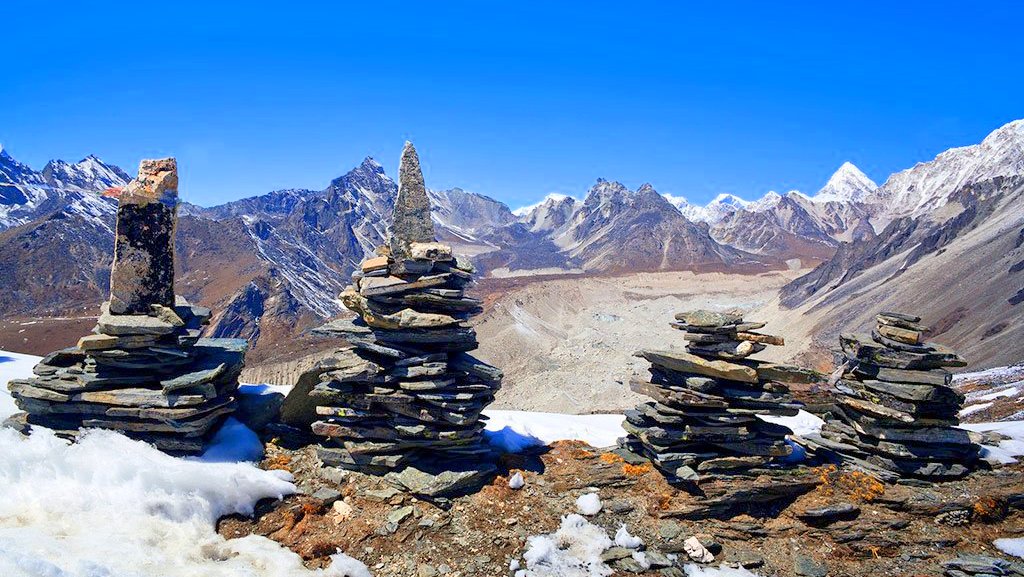
- Kongma La Pass: The first of the three passes, Kongma La, sits at 5,535 meters and is the highest and often considered the most challenging. It offers dramatic views of Lobuche East and West, Cholatse, and several other peaks.
- Cho La Pass: The second pass, Cho La, reaches 5,420 meters and involves a glacier crossing which can be quite challenging but is immensely rewarding with its stunning panoramic views.
- Renjo La Pass: The final pass, Renjo La, at 5,360 meters, provides perhaps the most breathtaking vistas, with a sweeping view of the Gokyo lakes on one side and the Rongbuk side of Everest on the other.
- Gokyo Lakes and Gokyo Ri: Along with the passes, trekkers visit the beautiful Gokyo Lakes and ascend Gokyo Ri, which offers one of the best views of Everest and its neighboring peaks.
- EBC and Kala Patthar: The trek includes visits to Everest Base Camp (EBC) and the climb to Kala Patthar for the classic view of Everest’s towering south face and the surrounding peaks.
- Sherpa Culture: Immerse yourself in the local culture by visiting Sherpa villages and monasteries, including the famous Tengboche Monastery, and learn about the traditions and lifestyle of the Everest region's native people.
- Sagarmatha National Park: Trek through diverse landscapes within the Sagarmatha National Park, a UNESCO World Heritage Site, home to rare species such as the snow leopard and the Himalayan tahr.
- Suspension Bridges and River Valleys: Cross numerous suspension bridges over the Dudh Koshi River and other tributaries, which are not only functional but also offer thrilling experiences and fantastic photo opportunities.
The Three Passes Trek is a true test of a trekker’s endurance and spirit, recommended for those who seek a more intense and fulfilling experience in the Everest region. It combines rigorous high-altitude hiking with cultural exploration, making it one of the most rewarding treks in Nepal. For those who want to experience everything the Himalayas have to offer, from majestic peaks to vibrant local cultures and stunning natural landscapes, the Three Passes Trek is an unparalleled adventure.
Best Time to Visit the Top 10 Trekking Destinations in Nepal
Choosing the right season for trekking in Nepal can dramatically affect your experience, as weather conditions can vary significantly between different times of the year. Each season offers unique advantages and challenges, making some trekking destinations more suitable during certain months. Here’s a seasonal guide to help you decide the best time to visit the top 10 trekking destinations in Nepal:
- Spring (March to May): Spring is one of the best times to trek in Nepal due to the warm weather and the blossoming of rhododendrons and other flowers along the trails, particularly in the Annapurna and Langtang regions. The visibility is usually clear, offering spectacular mountain views. Destinations like the Everest Base Camp, Annapurna Circuit, and the Langtang Valley Trek are particularly beautiful as the landscapes turn vibrant with lush vegetation and blooming flora. This season is also ideal for wildlife enthusiasts, as many species are more active and visible.
- Summer/Monsoon (June to August): The summer or monsoon season is generally less ideal for trekking in most of Nepal due to heavy rains, which can cause landslides and muddy trails, especially in the Annapurna and Everest regions. However, it's a great time to trek in the rain shadow areas like Upper Mustang where precipitation is scant and the landscapes are starkly beautiful. These regions offer a unique trekking experience as they remain largely dry, revealing deep valleys and rocky terrains that are different from the lush green trails seen in other parts of Nepal.
- Autumn (September to November): Autumn is Nepal's peak trekking season due to its excellent weather conditions, stable temperatures, and clear skies, which provide some of the best mountain views. Nearly all trekking destinations, including Kanchenjunga Base Camp, Manaslu Circuit Trek, Annapurna Base Camp Trek, and Gokyo Lakes Trek, are highly accessible and offer vibrant cultural experiences as many local festivals fall during this time. The clear skies and moderate climate make high-altitude passes and viewpoints particularly rewarding.
- Winter (December to February): Winter in Nepal brings colder temperatures, especially at higher altitudes, but it also means fewer trekkers on the trails and clearer mountain views as the dust and haze are minimal. While high-altitude treks like the Three Passes Trek can be challenging due to snow and closed passes, lower-altitude treks such as the Ghorepani Poon Hill Trek and treks in the lower reaches of the Everest and Langtang regions can be quite pleasant. It’s a great time for those who prefer solitude and are prepared to face the cold.
By understanding the seasonal variations, trekkers can choose the best time to explore Nepal's diverse trekking destinations, each offering unique experiences depending on the time of year.
Essential Tips for the Top 10 Trekking Destinations in Nepal
When planning a trek to one of Nepal's top trekking destinations, it’s important to consider several key tips to ensure a safe, enjoyable, and successful journey. Here are some essential tips tailored for trekkers:
- Acclimatization and Altitude Sickness: The risk of altitude sickness is significant, especially on higher altitude treks like the Everest Base Camp Trek and the Three Passes Trek. It’s crucial to have a flexible itinerary that allows for proper acclimatization. Learn the symptoms of altitude sickness and know when to rest or descend.
- Permits and Regulations: Most trekking routes in Nepal require permits, such as the TIMS card or region-specific permits like those for the Annapurna Circuit or Manaslu Circuit Trek. Ensure you have all necessary permits arranged either through a trekking agency or the Nepal Tourism Board.
- Hire Local Guides and Porters: Not only does hiring local guides and porters provide essential employment to local communities, but it also enhances your trekking experience. Local guides offer invaluable insights into the culture and nature of the area, which you might miss otherwise.
- Pack Wisely: The weather in the Himalayas can change rapidly, so packing layering clothing, a good quality sleeping bag, and waterproof gear is essential. Also, include a first-aid kit, water purification tablets, and sun protection.
- Travel Insurance: Ensure that your travel insurance covers high-altitude trekking and medical evacuation, which is crucial for remote treks like the Kanchenjunga Base Camp Trek and treks in the Everest region.
- Physical Preparation: The treks can be demanding, with daily hikes of 5-8 hours. Engaging in physical training such as hiking, jogging, and cardiovascular exercises months before your trip will significantly increase your enjoyment and stamina.
- Cultural Sensitivity: Nepal is rich in cultural diversity, with varied customs and traditions. Be respectful of local norms, dress modestly, ask permission before taking photos, and learn a few basic phrases in Nepali to connect with locals.
- Sustainable Trekking Practices: Carry out all your trash, use water sparingly, avoid plastic, and support local businesses by buying local products and services. Your choices can contribute to conservation efforts and the well-being of local communities.
- Check the Weather and Seasonal Conditions: Before starting your trek, check the local weather conditions. Seasons dictate the trekking experience in Nepal, with each having its pros and cons as outlined earlier.
- Emergency Preparedness: Carry a detailed map, a compass, and have a means of communication, such as a satellite phone in areas with no mobile coverage. Knowing the locations of the nearest medical facilities or rescue services is crucial, especially in isolated areas.
By following these tips, you’ll be better prepared to tackle the challenges and enjoy the immense beauty and unique cultural experiences that Nepal’s top trekking destinations have to offer. Whether you’re crossing high passes in the Everest region or exploring the arid landscapes of Upper Mustang, preparation is key to a fulfilling trekking adventure.
The Top 10 Trekking Destinations in Nepal offer an extraordinary variety of experiences, from the awe-inspiring heights of the Everest Base Camp Trek to the rich cultural tapestry of the Annapurna Circuit and the remote, pristine landscapes of the Kanchenjunga Base Camp Trek. Each trek provides a unique window into the natural beauty and cultural heritage of Nepal, catering to both seasoned mountaineers and those new to the trekking world. Whether you're seeking breathtaking mountain views, challenging hikes, or deep cultural immersion, Nepal’s top treks promise unforgettable adventures and transformative experiences. As you prepare for these journeys, remember to respect the natural environment and local cultures, ensuring these treasures remain preserved for generations to come.
FAQs of the Top 10 Trekking Destinations in Nepal
Q: What is the best time to trek in Nepal?
A: The best time to trek in Nepal is during the pre-monsoon spring season (March to May) and the post-monsoon autumn season (September to November). These periods offer stable weather, clear skies, and the best visibility.
Q: Do I need a guide to trek in Nepal?
A: While not mandatory on all treks, hiring a guide is highly recommended, especially for remote or challenging treks like the Three Passes Trek or Manaslu Circuit Trek. Guides provide valuable insights into local culture and landscapes, enhance safety, and help with communication.
Q: What permits do I need for trekking in Nepal?
A: Most treks require a TIMS (Trekkers' Information Management System) card and a National Park or Conservation Area permit. Specific regions like Manaslu, Mustang, and Kanchenjunga require special restricted area permits.
Q: How should I prepare for high-altitude trekking?
A: To prepare for high-altitude trekking, focus on cardiovascular fitness, strength training, and hiking practice. Also, plan for gradual acclimatization during your trek to avoid altitude sickness.
Q: What should I pack for a trek in Nepal?
A: Essential items include layered clothing, a waterproof jacket, trekking boots, a sleeping bag suitable for cold temperatures, a first-aid kit, water purification tablets, sunscreen, sunglasses, and a durable backpack. Consider the specific conditions and duration of your trek when packing.
Q: Are the trekking routes safe in Nepal?
A: Trekking routes in Nepal are generally safe, but it’s important to be cautious of weather conditions, altitude sickness, and physical challenges. Local guides and porters can enhance safety by providing expert navigation and support.
Q: Can I trek independently in Nepal?
A: Yes, independent trekking is allowed in many regions. However, some areas, particularly those close to the borders of Tibet and India, require you to trek with a guide and obtain special permits.
Q: What are the accommodation options on treks in Nepal?
A: Accommodation ranges from basic teahouses offering dormitory-style rooms and home-cooked meals to more luxurious lodges with private rooms and hot showers, mainly found on popular routes like the Everest Base Camp and Annapurna Base Camp treks.
Q: How much does it cost to trek in Nepal?
A: The cost varies depending on the route, duration, and type of trek. Budget trekkers can expect to spend around $20-$30 per day, while those preferring more comfort may spend up to $100 per day or more. Special permits and guide services add additional costs.
Q: What cultural etiquette should I follow while trekking in Nepal?
A: Respect local customs by dressing modestly, removing shoes before entering temples or homes, greeting people with “Namaste,” and asking for permission before taking photos. Always follow your guide’s advice on cultural etiquette.



